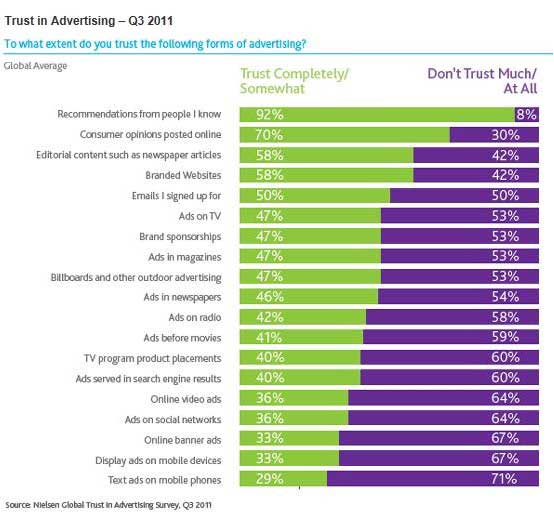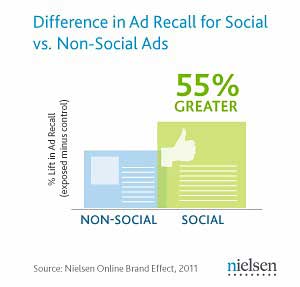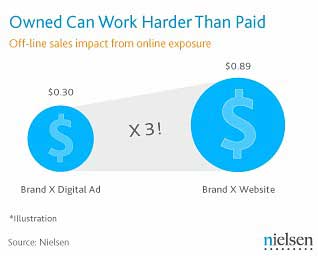Personal recommendations and branded websites are more trusted than paid advertising in all its forms, including digital, mobile, TV, and print media, according to a report by Nielsen.
Among surveyed consumers worldwide, "recommendations from people I know," or personal recommendations, garner the highest trust ranking with 92% of consumers trusting this source completely or somewhat.
By contrast, mobile ads—both in display (33%) and text format (29%)—are the least trusted format of paid advertising. However, other digital formats such as banner ads (33%), and those served via social networks (36%), don't fare much better. 
People place more trust in "owned" media such as branded websites (58%) and permission-based email (50%).
Below, other findings from the Nielsen study, which also explored various advantages of combining earned, owned, and paid media to maximize the impact of ad dollars.
The following are three examples of convergence between paid, owned, and earned media.
1. Paid ads work harder with social elements
Research on Facebook ads with and without a social layer (e.g., "Jimmy, Billy and eight other friends are fans of Brand X"), shows that social ads generate 55% greater ad recall than ads without a social layer:

2. Paid digital ads drive owned media use
Digital advertising can drive consumers to a brand's owned media. In the example below, Nielsen explored the effectiveness of four different brands' digital advertising in driving consumers to their websites. Brands A and B were far more successful in doing so than Brands C and D:

3. Owned can work harder than paid
To understand the impact of owned media when consumers arrive at websites, Nielsen measured the off-line sales impact of those consumers exposed, versus not exposed to a brand's website. In the example below, exposure to Brand X's website drove almost three times the sales lift of paid digital ads alone:




